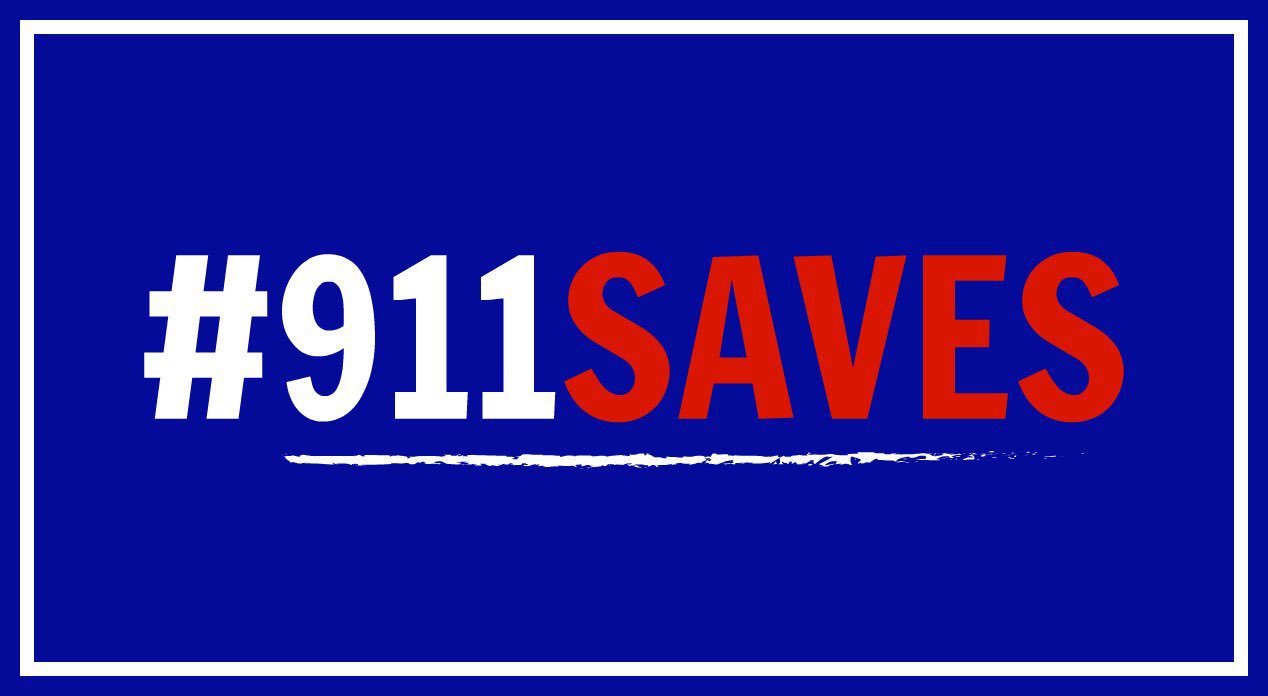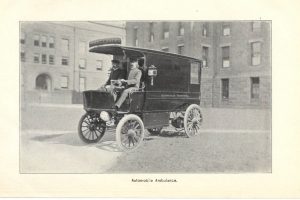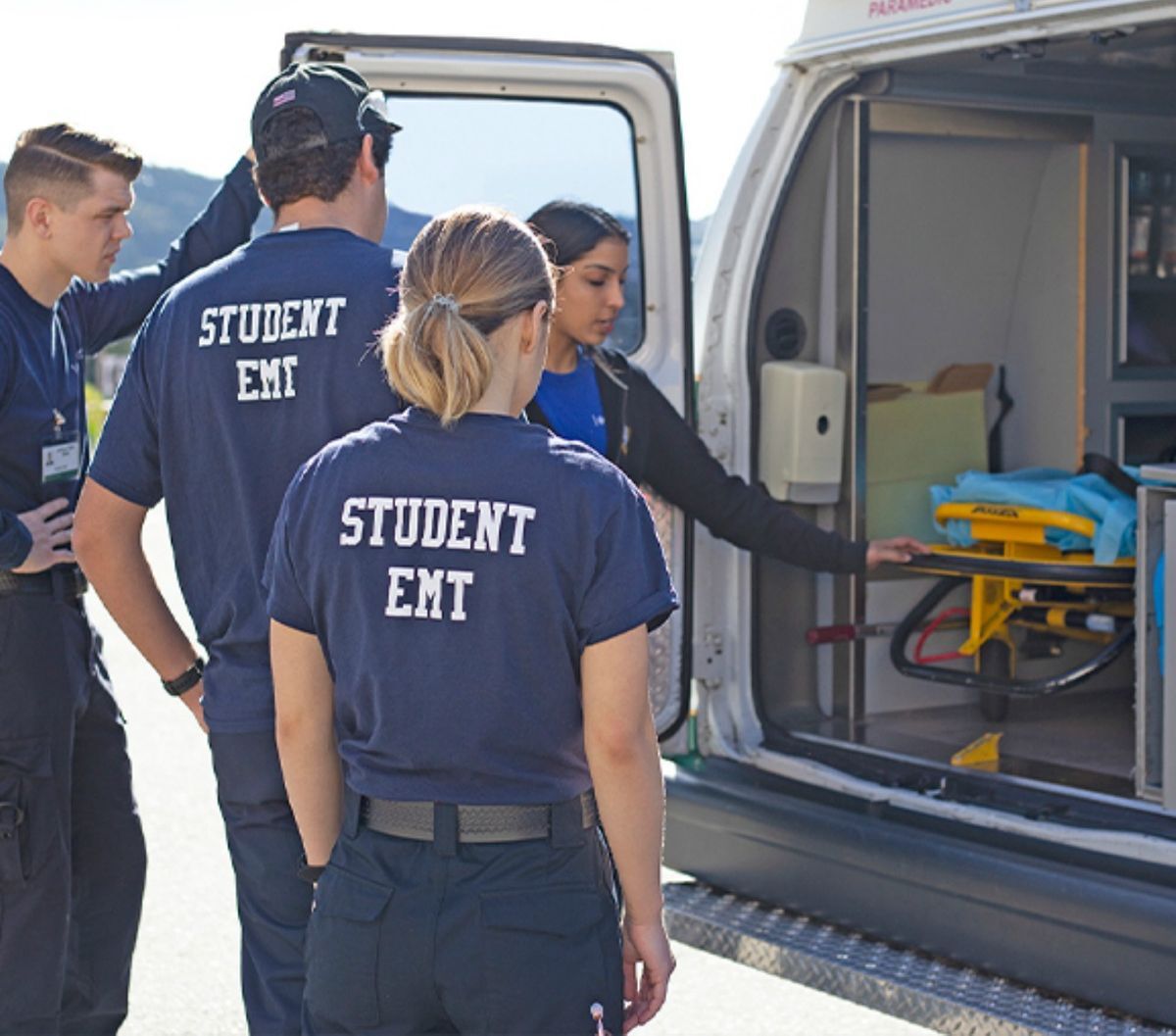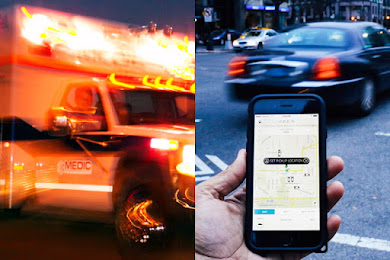On April 13th, 1994, then-President Bill Clinton signed into effect the Presidential Proclamation 6667, officially declaring National Public Safety Communications Week to be recognized each year during the second week of April.
"America’s public safety telecommunicators serve our citizens daily in countless ways," the proclamation says. "The work of these "unseen first responders" is invaluable in emergency situations, and each of these dedicated men and women deserves our heartfelt appreciation."
But the classification of dispatchers as "first responders" varies greatly, depending on the lexicon of the organization you ask. Traditionally, first responder is a term reserved for those who are first to arrive at the scene of an emergency. It's typically agreed upon by all that police officers are first responders, but not police dispatchers. EMTs, sure, but EMDs? That depends on who you ask.
Missouri, Illinois, and California are among the states that officially recognize dispatchers as first responders, a classification that enables them to access resources designated to alleviate the heavy toll that our jobs take on us. Other states have passed or introduced bills that, while not specifically classifying public safety communicators as "first responders," do aim to extend access to mental health and workers' comp resources. But as of right now, as far as the federal government is concerned, 9-1-1 is a "clerical" role.
However, a recent bill proposed in Congress aims to change that.
The Supporting Accurate Views of Emergency Services (911 SAVES) Act would officially and nationally reclassify us as First Responders, extending to us the protections and benefits thereof. The 911 SAVES act has been backed by many organizations and multiple states. As far as I've been able to tell, it's a nearly ubiquitous opinion that 9-1-1 dispatchers deserve the title of First Responder. If there is dissension, it's kept pretty much on the down-low.
But in honor of National Public Safety Telecommunicators Week, I say we humor Congress with a friendly two-sided debate, looking at all of the main arguments in turn.
Against: 9-1-1 Dispatchers Are Not First Responders
The definition of "First Responder" is that they're the first to respond to an emergency. Dispatchers do not go on scene, are protected from dangers faced by true first responders, and do not always actively participate in every aspect of pre-arrival care. For these reasons, it is appropriate to maintain the status of “clerical” professionals rather than give dispatchers the title of “first responder.”
In 2010, APCO proposed two changes to the Standard Occupational Classification. The first was to establish the official job title as "Public Safety Communicator" across the board, condensing several other jobs (“dispatchers,” “radio operators,” etc.) into one occupational category. The second was to classify the job as a "protective" occupation, the same as police, fire, and EMS responders, as well as lifeguards, crossing guards, and the TSA (SOC Revision).
The proposal was denied.
“The work performed is that of a dispatcher, not a first responder," responded the Office of Management and Budget. "Most dispatchers are precluded from administering actual care, talking someone through procedures, or providing advice... (and) dispatchers are often located in a separate area from first responders and have a different supervisory chain” (Docket 1-0199). The OMB’s rejection of this proposed change is illustrative of the primary argument against the reclassification, which is that dispatchers do not respond to the scene as other first responders do.
This is a risk that I do not have to live with every day of my life. The status afforded to first responders is more than just a celebrated title; it promises protections and resources designed to provide support with the constant trauma they are exposed to. Many of these resources are designed to combat the mental health epidemic that is only to be expected from a demographic of workers who regularly face trauma-- trauma that I, from the other side of the phone, am exempt from witnessing in person.
Furthermore, not every person who answers a 9-1-1 phone has the same qualifications. Many departments separate out their police and fire/EMS dispatchers, which means that the police side isn’t always certified in EMD. Not every state requires the 40 hours of training that I received, with some not requiring anything specific. So perhaps extensive training (two to six months, depending on which of my area’s agencies you work for) may not enough to justify “first responder” status.
For: 9-1-1 Dispatchers Are First Responders
Dispatchers aren’t just first responders. We’re the first responders.
The first link in the chain of response is the call for help. Retired law enforcement agent Melissa Mann writes, “Police, fire and EMS dispatchers… are essentially the very first contact in an emergent situation. They must triage the call, gather pertinent information and render the necessary aid" (Mann).
Mann goes on to describe how dispatch work is far more complex than a simple relay service, explaining that oftentimes we have to turn brief conversations with often scared or injured people into productive interactions, withdrawing and interpreting pertinent information for the responders, all in a timely fashion.
Beyond the complexities of daily operations, there is also a tremendous responsibility that emergency response communication entails. Earlier, I argued: “Every time my officers pull someone over, there is a genuine concern for their safety.” This is true. I would know: I’m the one who sends them backup whenever things go sideways. I’m also the one whose responsibility it is to make sure that they have all of the facts before they engage with anybody involved with the emergencies to which I send them. It’s my job to run the checks, to screen every license plate, to know and relay to on-scene responders what hazards they could face.
The potential for a line-of-duty injury or death weighs on us just as it does on our officers. If the unthinkable happens, if somebody is hurt or killed on our watch-- that is something we will have to live with for the rest of our lives. This responsibility alone is more than a typical clerical job expects.
911 dispatchers take phone calls from people in desperate situations every day. A study conducted by researchers at the University of Central Florida in coordination with the International Academies of Emergency Dispatch conducted a study on just this.
“Emergency dispatchers are exposed to potentially traumatic events at rates that likely exceed that of emergency first responders,” the research paper states. It goes on to explain that “dispatchers are immediately immersed into a traumatic scene and are required to communicate with frantic and panicked callers. These demanding work conditions require the dispatcher to remain calm and suppress emotional reactions during exposure to traumatic events that include drowning, distressed children, suicide, physical assault, as well as the aftermath of these incidents” (Trachik et al 27).
The study looked at a sample of 209 emergency dispatchers, with a wide range of ages and tenure and spanning all shift types. 17% of these dispatchers reported at least nine symptoms of acute stress disorder (ASD) from a traumatic call occurring in the past month. “This rate of ASD is notably higher than that of the general population,” the study reports (27). “Furthermore,” it continues, “given that dispatchers experience a similar amount and type of traumatic event as first responders,” they suggest that future research be based on studies already conducted on first responders (31).
I find it incredibly telling that psychologists would lump dispatchers in with the rest of the first responder community, if not all that surprising. Cases of Acute Stress Disorder experienced by 9-1-1 dispatchers, as found in this study to be hovering just under the 20% mark, falls right in line with the expected rates of PTSD occurrence among first responders, which is between six and thirty percent (28). It certainly negates any argument against us qualifying as first responders on the basis of trauma exposure.
Furthermore, “many studies have found that expanding PTSD criteria to included "witnessing and hearing about a trauma" additionally accounts for 38% of true PTSD cases in a given population… Due to these findings, the DSM criteria for PTSD has been changed, reflecting the addition of "experiencing repeated or extreme exposure to aversive details of traumatic events," and specifically mentioning first responders” (32).
If even the people in charge of diagnosing psychological disorders qualify “experiencing repeated or extreme exposure to aversive details of… traumatic event(s) (e.g., first responders collecting human remains; police officers repeatedly exposed to details of child abuse)” (DSM-5) as qualifiers of PTSD, then how could listening to somebody tell you on the phone all about their worst day not count as “traumatic enough”?
But Dizzy, you might be thinking. Didn’t you also say that not every 9-1-1 dispatcher is cross-trained in police, fire, and EMS service, so not everyone in the field does all of the parts of the job at once? Why, yes, I did say that, and you would be correct. But just because not every dispatcher will experience every type of call doesn't mean they're any safer. According to the study, the only “meaningfully and statistically different” call type was those involving children, which is a demographic that no dispatcher is exempt from dealing with (Trachik et al 32).
The 911 SAVES Act aims to rectify the grievous mistake that the OMB made by denying that 9-1-1 dispatchers belong among our brethren on the front lines. The bill is still on the table, so now is a great time to call your local representatives and let them know what you think. Are 9-1-1 dispatchers deserving of the status of first responders? Do we qualify for the same kinds of mental health resources as firefighters, cops, EMTs, and paramedics? Well, that’s the beauty of the democratic process: we get to decide. I think that National Public Safety Telecommunicators Week is the perfect time to call your Senator, State Representative, and Congressperson to tell them that 9-1-1 saves.




:max_bytes(150000):strip_icc()/taylor-grote-L3qUP8MpExc-unsplash-1faeb0c74498428994cb22339ed73260.jpg)









